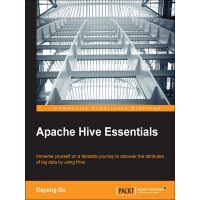内容简介
If you are a data analyst, developer, or simply someone who wants to use Hive to explore and analyze data in Hadoop, this is the book for you. Whether you are new to big data or an expert, with this book, you will be able to master both the basic and the advanced features of Hive. Since Hive is an SQL-like language, some previous experience with the SQL language and databases is useful to have a better understanding of this book.

